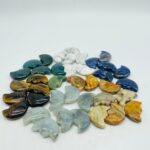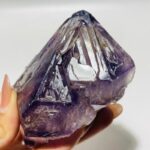Introduction
Brown crystals, with their earthy hues and enigmatic charm, captivate collectors and enthusiasts alike. Their rarity and distinctive properties render them objects of fascination and desire. This comprehensive guide delves into the realm of brown crystals, unveiling their unique characteristics, identification methods, and myriad applications.

Types of Brown Crystals
Brown crystals encompass a diverse spectrum of mineral species, each possessing its own distinct composition and properties. Some of the most prevalent brown crystals include:
Sphene (Titanite)

– Chemical composition: CaTiSiO5
– Color: Brown to near black, sometimes with a greenish tinge
– Mohs hardness: 5-5.5
– Distinctive feature: Wedge-shaped crystal habit and brilliant luster
Zircon

– Chemical composition: ZrSiO4
– Color: Brown, orange-brown, or reddish-brown
– Mohs hardness: 7.5
– Distinctive feature: High refractive index and dispersion, resulting in a fiery brilliance
Topaz

– Chemical composition: Al2SiO4(F,OH)2
– Color: Brown, sherry-brown, or smoky brown
– Mohs hardness: 8
– Distinctive feature: Excellent cleavage and perfect basal parting
Smoky Quartz

– Chemical composition: SiO2
– Color: Brown, gray-brown, or black
– Mohs hardness: 7
– Distinctive feature: Natural irradiation that imparts its distinctive brown coloration
Identification Methods
Identifying brown crystals requires a combination of visual examination, physical properties, and specialized tests. Here are some key identification methods:




























